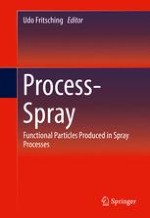2016 | OriginalPaper | Buchkapitel
11. Correlations Between Suspension Formulation, Drying Parameters, Granule Structure, and Mechanical Properties of Spray Dried Ceramic Granules
verfasst von : Susanna Eckhard, Sören Höhn, Manfred Fries
Erschienen in: Process-Spray
Aktivieren Sie unsere intelligente Suche, um passende Fachinhalte oder Patente zu finden.
Wählen Sie Textabschnitte aus um mit Künstlicher Intelligenz passenden Patente zu finden. powered by
Markieren Sie Textabschnitte, um KI-gestützt weitere passende Inhalte zu finden. powered by
